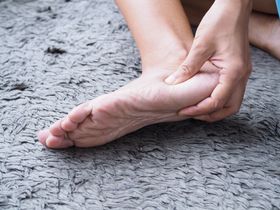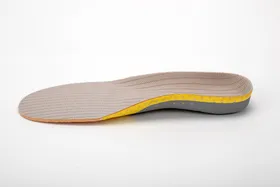Does Running Aggravate Morton's Neuroma?
Learn more about Morton’s Neuroma, if running aggravated your symptoms, and tips on conservative management strategies that may help you with this condition.
Published August 15, 2022
Morton's neuroma (not to be confused with metatarsalgia) is a painful condition that occurs when the nerves of the foot become inflamed and aggravated, usually due to increased pressure or compression. It often develops after a change in footwear, such as switching to new running shoes or wearing high heels for extended periods of time.
The condition is also linked to overusing the foot and requires a reduction in physical activity to allow time for the nerve to settle after agitation. Continuing physical activity will see this condition stay the same or get progressively worse over time.
Should You Keep Running With Morton's Neuroma?
You're usually advised to take a break from your physical activities if you experience foot pain after running. Continually placing pressure onto the forefoot could cause your symptoms to increase, therefore a rest period will give the inflamed nerve time to recover.
Repetitive activity without adequate rest is the common cause of Morton's neuroma. Changing your physical activity routine and using orthotics that are best for Morton's neuroma are proven helpful management methods. Wearing shoes that don't crowd the forefoot and toes will also help to reduce the compression placed on the nerve itself.
Once the symptoms have subsided, you can resume your physical activity. Take care to increase the intensity and duration of exercise gradually to avoid a flare-up. If the symptoms return, reduce your physical activity and begin again once the symptoms have disappeared.
If you continue to run without making adjustments, you could develop a severe case of Morton's neuroma. The nerve grows in size and gives the sensation that you're standing on a pebble. In such cases, surgery is recommended to remove the neuroma.
How Long Do Morton's Neuroma Symptoms Usually Last?
The symptoms noticeably reduce when the aggravating factors are removed, such as tight-fitting shoes and the physical activity itself as already discussed. The duration of the symptoms depends on the severity and the amount of time you've suffered with Morton's neuroma. It takes roughly 4 weeks for the symptoms to completely subside. However, it may take longer in severe cases.
By reducing your physical activity, and aided by other techniques such as ice, orthotics, gentle forefoot massage, wide-toed shoes, and foot stretches, you’ll reduce your overall experience of symptoms.
Related Articles

Can Natural Treatments and Custom Insoles Cure Pain From Flat Feet?
Upstep Staff
December 16, 2024

Eat For Your Feet
Upstep Staff
October 15, 2024

Massages for Heel Spurs: Helpful Tips and Techniques
Babafemi Adebajo
May 2, 2023

Supination Custom Orthotics—2026 Review
Babafemi Adebajo
July 15, 2024

Are Birkenstocks Really Good for All Feet? A Podiatrist's Review
Janik Sundstrom
July 10, 2025
Related Posts
Babafemi Adebajo
5 Exercises for Morton's Neuroma: Alleviate Your Foot Pain
Janik Sundstrom
Best Insoles for Trail Running Performance
Janik Sundstrom
Best Morton's Neuroma Orthotics
Janik Sundstrom
Ankle Pain When Walking: Most Common Causes
Babafemi Adebajo
Most Common Causes of Heel Pain After Running
Babafemi Adebajo



